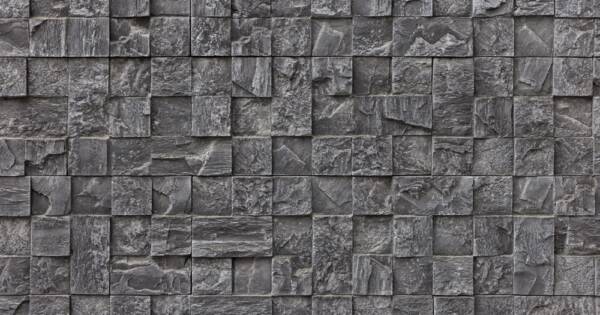Acoustic panels are the most popular solution for spaces where echo and reverberation create so much ambient noise, it’s difficult to hear. By absorbing sound, acoustic panels minimize sound reflections and create a more comfortable acoustic environment where speech is intelligible, and loudness is reduced.
Understanding the Basics of Acoustic Panels
Acoustic panels are designed to absorb or diffuse sound waves to reduce noise, improve clarity, and create a more pleasant auditory environment. Typically made from materials like foam, fabric-wrapped fiberglass, or wood, these panels are versatile tools for addressing sound issues. To select the best option, it’s essential to first understand how they work and their primary functions.
Absorption vs. Diffusion
Before you purchase acoustic panels, consider whether your space requires sound absorption, diffusion, or a combination of both.
- Sound absorption: Absorptive panels minimize echoes and reduce noise levels by converting sound energy into heat. These are ideal for spaces like offices, home theaters, and classrooms where reducing reverberation is key.
- Sound diffusion: Diffusive panels scatter sound waves, creating a more balanced audio environment. These are often used in music studios or performance spaces to enhance sound quality without overly dampening it.
Understanding these distinctions can help narrow your choices and ensure the panels meet your specific sound requirements.
Evaluating the Needs of Your Space
The type and number of acoustic panels you’ll need depend largely on the characteristics of your space. Factors such as room size, intended use, and existing furnishings all influence your decision.
Room Size and Shape
Larger rooms with high ceilings typically require more sound treatment than smaller, enclosed spaces. Additionally, irregularly shaped rooms may benefit from a mix of absorption and diffusion panels to address unique sound reflection patterns.
Purpose of the Space
Consider the primary function of the room:
- Home office: For better focus during calls and work, absorptive panels can help minimize background noise.
- Music studio: Both absorptive and diffusive panels are crucial for recording and mixing sound accurately.
- Public spaces: Restaurants and retail stores often use panels to create a quieter, more inviting atmosphere for patrons.
Matching the panel type to your room’s purpose will help you achieve the desired acoustic outcome.
Selecting the Right Materials
The material of your acoustic panels impacts both their performance and aesthetics. Common options include foam, fabric, and wood, each with distinct advantages.
Foam Panels
Foam panels are lightweight, cost-effective, and easy to install. They are best suited for moderate sound absorption in home studios or offices. While effective for basic sound control, foam panels may not be the most durable option.
Fabric-Wrapped Fiberglass Panels
These panels offer superior sound absorption and come in a variety of colors and textures, making them ideal for professional settings. They are durable and provide excellent acoustic performance but are typically more expensive than foam options.
Wooden Panels
Wooden acoustic panels add a stylish touch to spaces while offering a combination of absorption and diffusion. They’re commonly used in high-end studios, concert halls, or other areas where aesthetics and sound quality are equally important.
Considering Aesthetic and Practical Features
Beyond their acoustic properties, panels should complement the visual style of your space and meet practical requirements such as installation and maintenance.
Design and Appearance
Acoustic panels are available in a wide range of colors, shapes, and finishes. For spaces where design matters—like living rooms or corporate offices—choose panels that enhance the overall look while serving their acoustic function.
Ease of Installation
Some panels are designed for easy DIY installation with adhesive strips or hooks, while others may require professional mounting. Consider your budget and timeline when deciding.
Maintenance and Durability
If the panels are placed in high-traffic areas or public spaces, choose materials that resist wear and are easy to clean. This ensures long-term usability without frequent replacements.
Tips for Effective Placement
The placement of acoustic panels is just as important as their type and material. Strategic positioning can maximize their effectiveness while keeping the space functional.
Key Placement Areas
- Walls: Place panels at ear level to address sound reflections and echoes.
- Corners: Use bass traps in corners to manage low-frequency sound buildup.
- Ceilings: In rooms with high ceilings, panels can reduce vertical sound reflections and improve overall acoustics.
Balancing Coverage
Avoid overloading your space with panels, which can make it feel overly dampened or unnatural. Instead, aim for a balanced mix of absorptive and diffusive elements tailored to the room’s needs.
Making an Informed Purchase
Once you’ve assessed your requirements, it’s time to select and purchase your acoustic panels. Consider the following:
Testing and Reviews
If possible, test panels in your space before committing to a purchase. Alternatively, seek reviews and case studies to understand how a particular product has performed in similar environments.
Budget Considerations
Acoustic panels come in a wide price range. While costlier options often provide better performance, budget-friendly alternatives can still offer significant improvements when used effectively.
Consultation with Experts
For complex spaces or high-stakes applications, consulting an acoustic professional can help ensure optimal results. They can provide tailored advice on panel selection, placement, and installation.
Find the Right Fit Today!
Choosing the right acoustic panels for your space doesn’t have to be daunting. By understanding the basics of sound management, evaluating your room’s specific needs, and considering factors like material, design, and placement, you can make an informed decision that enhances both the functionality and aesthetic appeal of your environment. Remember, the right acoustic treatment can transform any space into one that sounds as good as it looks.




